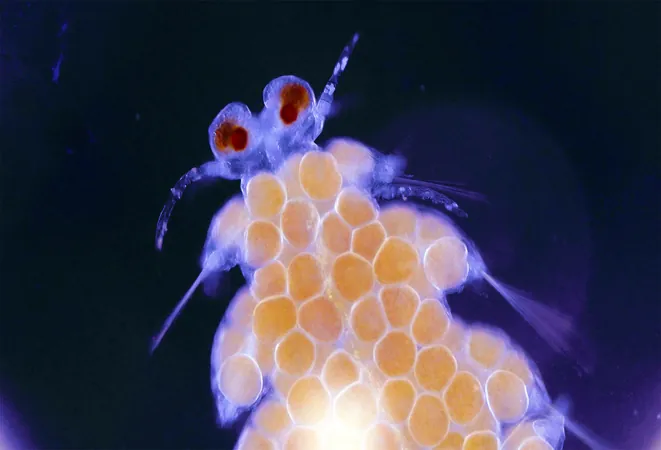
Meet the Incredible Worm That Controls Hundreds of Bodies with Just One Head!
2025-05-22
Author: Wei
The ocean is home to some truly bizarre creatures, but few can compare to the astonishing Ramisyllis kingghidorahi. This remarkable worm thrives within the hidden recesses of certain sea sponges, and recent studies reveal just how extraordinary it truly is.
Unlocking the Secrets of Ramisyllis kingghidorahi
Led by Dr. Guillermo Ponz-Segrelles from IES El Burgo-Ignacio-Echeverría in Madrid and the University of Göttingen, a global team has created the first comprehensive genetic map of this marine marvel.
The Anatomy of Wonder: A Single Head with Many Bodies
Ramisyllis kingghidorahi is unique for its single head which generates multiple body extensions throughout its sponge host. Each branch is equipped with a full set of organs yet remains connected to that same head, offering hundreds of potential reproductive sites.
Genetic Mysteries Unveiled: Location, Not Sex, Dictates Gene Activity
This groundbreaking study revealed that gene expression varies significantly by body region rather than by sex. The head, midsection, and reproductive areas show different genetic activations, with reproductive segments exhibiting distinct patterns between males and females.
The Midsection's Intriguing Role
Interestingly, the midbody region shows minimal genetic activity, suggesting it merely serves as a conduit. Yet, even here, female worms display unique genetic expressions compared to their male counterparts, leaving scientists puzzled about its role in reproduction.
Females Steal the Show: More Genes Activated!
Across all segments, females show a rich tapestry of gene activity, suggesting their reproductive strategies are more complex. This increasing gene response raises questions about the biological mechanisms at work.
The Missing Hormonal Signals
Researchers anticipated strong signals from reproductive hormones like methyl farnesoate but found them remarkably weak. This presents two theories: these hormones might influence earlier developmental stages or Ramisyllis kingghidorahi may employ a completely different molecular toolkit.
A Worm with a Complex Past
Genetic analysis hints at a fascinating evolutionary backstory, revealing potential partial genome duplication that could explain this worm’s complex reproductive system, setting it apart from its relatives.
Navigating Reproduction: Eyes on Each Stolon
Each reproductive branch, or stolon, sprouts temporary eyes for navigation during mating. This peculiar adaptation showcases how adept the worm is at sensing its environment.
Who Calls the Shots in Reproduction?
A key mystery remains: how does a single head orchestrate the activities of countless branches? Current findings suggest that different parts of the worm may respond to varying signals, but this remains an elusive puzzle.
The Quest for Answers Continues
Dr. Ponz-Segrelles expressed surprise at the findings: "We expected stronger sex-specific differences in the head, but our results were far less dramatic than anticipated." Each new discovery adds to the complexity of understanding how these incredible worms navigate their intricate lives.
Future Insights Await
With ongoing research utilizing advanced genomic techniques, scientists hope to unravel more secrets about marine invertebrates like Ramisyllis kingghidorahi and their evolution in symbiotic habitats. Such studies could illuminate the fascinating diversity of reproductive strategies in the annelid family.





 Brasil (PT)
Brasil (PT)
 Canada (EN)
Canada (EN)
 Chile (ES)
Chile (ES)
 Česko (CS)
Česko (CS)
 대한민국 (KO)
대한민국 (KO)
 España (ES)
España (ES)
 France (FR)
France (FR)
 Hong Kong (EN)
Hong Kong (EN)
 Italia (IT)
Italia (IT)
 日本 (JA)
日本 (JA)
 Magyarország (HU)
Magyarország (HU)
 Norge (NO)
Norge (NO)
 Polska (PL)
Polska (PL)
 Schweiz (DE)
Schweiz (DE)
 Singapore (EN)
Singapore (EN)
 Sverige (SV)
Sverige (SV)
 Suomi (FI)
Suomi (FI)
 Türkiye (TR)
Türkiye (TR)
 الإمارات العربية المتحدة (AR)
الإمارات العربية المتحدة (AR)